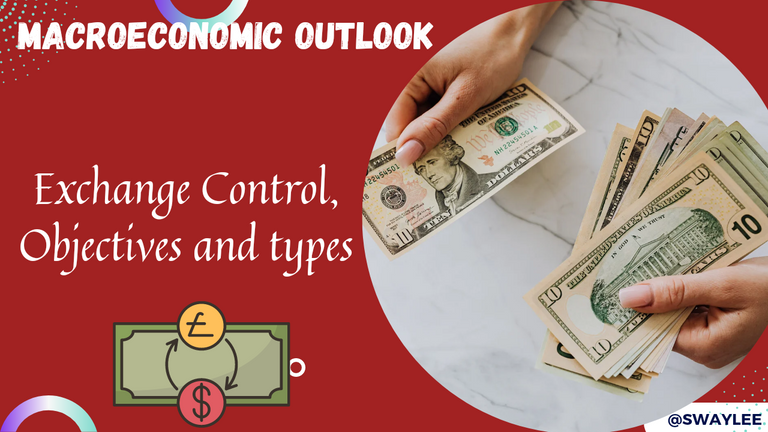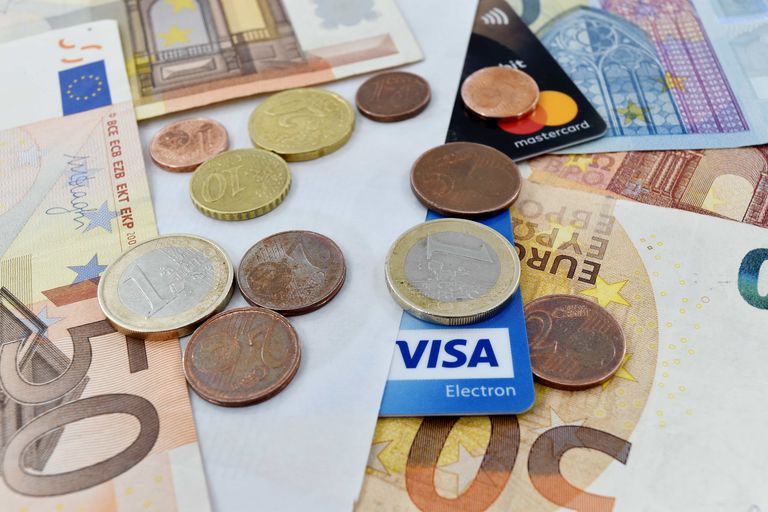

Greetings Everyone,
Welcome to Rasheed's blog and today we would continue looking at the macroeconomic variables but this time with relation to exchange control. The last time we looked at currency convertibility but this time we would be looking at the general name and concept. It is sure to be an interesting one so do well to read through to the end.

Exchange Control
This is a system in which the government of a country intervenes not only to maintain a rate of exchange which is quite different from what would have prevailed without such control but also require that the home buyers and sellers of foreign exchange dispose of their foreign funds in a particular way.
Foreign exchange control is a method of state intervention in the imports and exports of the country so that the adverse effects of deficit balance of payment may be corrected. The government restricts the free inflow and outflow of capital and exchange rate of currencies.
The government also earn revenue in the form of difference between selling and purchasing foreign exchange. They also stabilize the exchange rates, make imports of preferable goods possible by making necessary foreign exchange available and pay off foreign liabilities with the help of available foreign resources.

Objectives of Foreign Exchange Control
✓ It helps in the correction of balance of payment disequilibrium
The main purpose of exchange control is to restore the balance of payment equilibrium by allowing the nation import only when necessary and hence the demand for foreign exchange is limited up to the available resources. There are often times when the country devalues it's currency so that it will be able to export more to get more foreign currency.
✓ To be able to protect domestic and infant industries
Inorder to protect domestic trade and industries from foreign competitors, the government takes the initiative to control the exchange. This would would induce the domestic industries to produce and export more with the view of restricting importation on foreign goods.
✓ To maintain the level of rate of exchange
When the government feels that the rate of exchange is not at a particular level, it intervenes to maintain the rate of exchange at the level it wants. For this purpose, the government maintains a fund that is called the "Exchange Equalization Fund" to peg the rate of exchange. When the rate of a particular currency is high, the government starts selling the currency in an open market thus the rate of that currency falls because of increase in supply.
✓ Policy of Differentiation
The government may adopt the policy of Differentiation by exercising exchange control. If the government allows international trade with some country by releasing of foreign currency the government may restrict international trade (import and export) with some other countries by not releasing the foreign currency.
✓ To prevent Capital Flight
When the domestic capital starts flying out of the country, the government may check it's export through exchange control.

Various Types of Exchange Control
Mild System of Exchange Control
This is also known as exchange pegging, the government intervenes in maintaining the rate of exchange at a particular level. Under this system the government maintains the Exchange Equalization Fund in foreign currencies.Full Fledged System of Exchange
This system involves where the government doesn't only peg the rate of exchange but have complete control over the entire foreign exchange transaction. All receipts from exports and other transactions are surrendered to the control authority. The available supply of foreign exchange is allocated to different buyers of foreign exchange on the basis of certain determined criteria. In this way, the government is the sole dealer of foreign exchange.Compensating Arrangement
A compensating arrangement partakes of the character of the old fashioned banter deal. An example would be sale of Nigeria crude oil of particular value to Ghana and Ghana agreeing to supply gold of the same value to Nigeria at a mutually agreed exchange rate. Imports thus compensates for export leaving no balance requiring settlement in foreign exchange.Clearing Agreement
A clearing Agreement consists of an understanding by two or more countries to buy and sell goods and services to each other at mutually agreed rate of exchange against payment by buyer entirely in their own currency.Payment Arrangement
In a payment arrangement, the usual procedure of making foreign payment through the exchange market is left intact but each country agrees to establish a method of control whereby it's citizens and forced to purchase goods and services from the country in amount equal to what the country purchases from them.

Conclusion
The concept is exchange control is necessary for the country to thrive and also for it to maintain its currency value. I hope we all enjoyed the lecture. Thanks for reading.


Do vote @Blurt.Live as your Witness
Posted from https://blurt.live